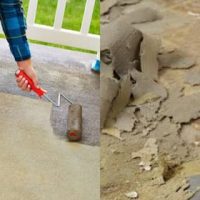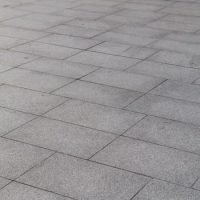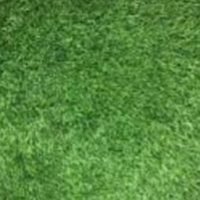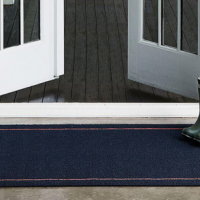Installation of outdoor carpeting to plywood was a tough DIY project for me if not done perfectly. I know what adhesive works best depending on the condition in which the carpet installation takes place. So let me explain how to glue outdoor carpets to plywood based on my own experience.
Whether it’s indoor or outdoor, the subfloor covered with carpet is always durable and easy to maintain. So, choosing the right adhesive for indoor/outdoor carpets was quite tricky for me to secure the wood subfloor.
Recently I installed carpets on two different plywood subfloors in my house. One of them was a marine-grade plywood subfloor in my garage where moisture and water were often circulated. The other one was the outdoor stairway’s subfloor.
However, getting outdoor carpets installed using glue was always challenging especially in these two different situations. Also, the adhesive used for the installation should withstand its surrounding weather condition.
So, I had a few trips to the nearest store and came up with a few options that worked best to glue outdoor carpets to plywood. Here I am sharing each step and the methods that I followed to accomplish it successfully.
Using carpet adhesive
Which adhesive would work best to glue the outdoor carpet to the wood floor surface? I could have ended up buying more adhesives as I had to install carpets on different subfloors.
But I needed to try out only two in one outdoor carpet adhesive that suits both cases. That is the reason why I recommend Roberts 6700 indoor/outdoor carpet/artificial turf adhesive for gluing outdoor carpets to different types of plywood.
What are the things that I love about Roberts 6700 indoor/outdoor carpet adhesive?
- Simply because it’s recommended to use even for marine-grade plywood
- A solvent-free and non-flammable carpet glue which is not harmless for humans and environment friendly
- It even worked perfectly on the exterior rubber backed marine carpet on my pontoon boat’s plywood decking
- Manufacturers’ recommendations also include that it helps to bond with concrete or cement, fiberglass, aged asphalt paving (hot applied), and aluminum. So, this is ideal to use on almost any type of surface to gluing carpet.
- The package includes 1 gallon of glue adhesive which was more than enough for me to use as a spray adhesive
- Though it has a thick texture it was easy to apply with a paint roller when gluing carpet to wood
- It’s a moisture control carpet glue adhesive that again works best on exterior grade plywood. So, I had no doubts about using this as an adhesive on both the plywood boat and marine carpet.
- Guarantees fast curing. It only took around 36 hours to get roughened for the adhesion
Unlike other adhesives that I used, the carpet backing nicely held up great on wood flooring after using this top-rated adhesive. Even the marine carpet on my boat deck bonds well on the surface without peeling off.
How much does it cost?
So, I highly recommend using this as an indoor or outdoor carpet glue to the bond interior or exterior grade plywood pieces. However, a 1 gallon of glue adhesive just costs around a few dollars at an affordable price.
If you want to buy it from Amazon,
Here are the steps that I followed to promote the adhesion of outdoor carpets to plywood allowing it to waterproof.
Step 1: Preparing the exterior carpet
I bought a new strip of carpet that had enough length to spread over the plywood surface. So, I did not want to join several pieces to cover up the surfaces that may show up edges of joined pieces after the installation.
However, I cut extra long pieces out of the carpet and stretched them to fit the size of the surface. This was to ensure that no wrinkles were visible on top of the carpet before applying the glue.
Then I made sure that the carpeting and the plywood piece were aligned without any error.
Step 2: Cleaning the piece of carpet
It is important to clean the carpet backing for better bonding with the wood surface. So, I decided to grab a towel or soft brush to remove dust or loose dirt from the backside of the carpet.
Step 3: Applying carpet adhesive
I advise you to wear gloves and masks as needed before the application. I put the carpet glue adhesive solution into a spray bottle. Then I sprayed an even layer as a topcoat on both carpet backing and wood surface.
However, I applied a thick layer of glue specifically on top of the marine-grade plywood surface on my boat deck for better adhesion. Because it often withstands wet conditions.
Step 4: Attaching carpet with wood surface
I placed the backing of glued outdoor carpet piece on top of the wood surface and applied some pressure to get them adhered. I made sure that the carpeting backing and wood underlayment were well attached to each other and let them dry overnight.
Then I trimmed the excess pieces of carpet from the wood surface and secured each edge of carpeting with a few staples.
I got excellent results by applying the same process and carpet adhesive for indoor carpeting as well.
Using contact cement glue
This is another best alternative to replace carpet adhesive for outdoor carpeting installation. I followed the same above steps and applied even layers for both carpeting backing and marine-grade plywood surface.
The main difference between an ordinary carpet adhesive and contact cement glue is, it requires 15 to 20 minutes air dry before attaching. So, both glue layers should completely be free from sticking before getting attached.
Final thoughts – How to glue outdoor carpet to plywood
Choosing an excellent quality outdoor carpet adhesive was one of the hardest tasks in my life as a DIYer. But installing outdoor carpets on indoor plywood or marine grade plywood is now an easy task for me more than anything else.
Because Roberts 6700 indoor/outdoor carpet or artificial turf adhesive has made perfect installations throughout my house being the best carpet glue. Specially I highly recommend this to use as an outdoor carpet adhesive for carpeting on plywood surfaces.
Contents






